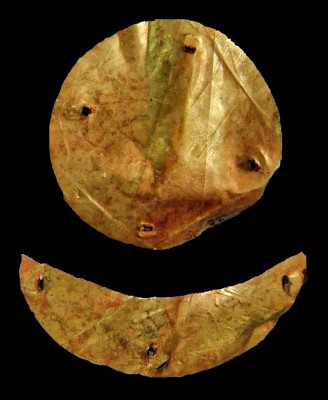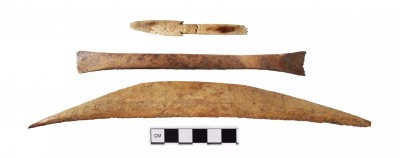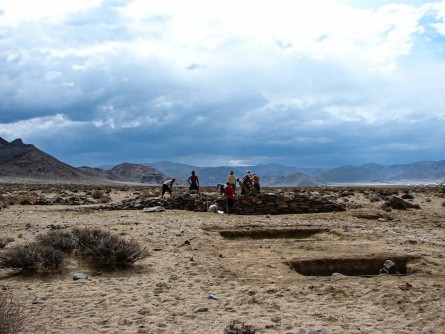Newswise —
The Xiongnu, the world's first nomadic empire, is finally emerging from history's shadows. Recent archaeological excavations and ancient DNA evidence are shedding light on this powerful empire that arose on the Mongolian steppe 1,500 years before the Mongols. Grounded in animal husbandry and dairying, the Xiongnu built their empire through mounted warfare, stretching their influence from Egypt to Rome to Imperial China. Their legendary conflicts with China even resulted in the construction of the Great Wall.
The Xiongnu, unlike their neighbors, did not have a writing system, resulting in a scarcity of historical records about them. Most of what is known about the Xiongnu comes from accounts recorded by their rivals and enemies, primarily chroniclers from the Han Dynasty. These accounts provide limited information about the Xiongnu's origins, political rise, and social organization. However, recent studies in archaeogenetics have shed some light on the Xiongnu's origins, tracing them back to a sudden migration and mixing of nomadic groups in northern Mongolia around 200 BCE. Despite these findings, many questions about the Xiongnu remain unanswered, adding to the mystery and intrigue surrounding this ancient empire.
Aiming to unravel the mysteries surrounding the Xiongnu empire, an international team of researchers from prestigious institutions such as the Max Planck Institutes for Evolutionary Anthropology (MPI-EVA) and Geoanthropology (MPI-GEO), Seoul National University, the University of Michigan, and Harvard University embarked on a comprehensive genetic investigation. Their focus was on two imperial elite Xiongnu cemeteries located along the western frontier of the empire: Takhiltyn Khotgor, which served as a burial site for the aristocratic elite, and Shombuuzyn Belchir, which was designated for the local elite.
Juhyeon Lee, the first author of the study and a PhD student at Seoul National University, elaborates on the research approach, stating, "We were aware that the Xiongnu exhibited a significant level of genetic diversity. However, due to the absence of comprehensive genomic data at a community level, it remained unclear whether this diversity originated from locally homogenous communities with diverse genetic makeup, or if local communities themselves were genetically diverse." Lee further explains that the team aimed to investigate how this genetic diversity was organized at various social and political scales, including its relation to factors such as power, wealth, and gender.
The rise of a multiethnic empire
The researchers made a noteworthy discovery as they found that the individuals within the two cemeteries, Takhiltyn Khotgor and Shombuuzyn Belchir, exhibited remarkably high genetic diversity, comparable to that found across the entire Xiongnu Empire. This high genetic diversity was evident not only across the empire as a whole, but also within individual communities and even within families, confirming the multiethnic nature of the Xiongnu Empire. However, the distribution of this genetic diversity was stratified by social status.
The individuals with the lowest status, who were buried as satellite burials of the elites and likely served as servants, showed the highest genetic diversity and heterogeneity. This suggests that these individuals originated from diverse regions within and beyond the Xiongnu Empire. On the other hand, the local and aristocratic elites, buried in wood-plank coffins within square tombs and stone ring graves, exhibited lower overall genetic diversity and had higher proportions of eastern Eurasian ancestries. This implies that elite status and power were concentrated among specific genetic subsets of the broader Xiongnu population.
Despite this stratification, the study revealed that even elite families utilized marriage to establish alliances with newly incorporated groups, particularly at Shombuuzyn Belchir, indicating a pattern of genetic integration and intermixing among different groups within the Xiongnu Empire.
Dr. Choongwon Jeong, Associate Professor of Biological Sciences at Seoul National University and senior author of the study, expressed that the research findings have shed light on how the Xiongnu Empire expanded by incorporating diverse groups and utilizing marriage and kinship as strategies for empire building. This new understanding provides valuable insights into the social and political dynamics of the Xiongnu Empire, offering a clearer picture of how this ancient nomadic empire grew and flourished.
Powerful women in Xiongnu society
Another significant finding from the research was that high-status burials and elite grave goods among the Xiongnu were predominantly associated with women, corroborating historical texts and archaeological evidence that highlight the prominent roles of Xiongnu women in the political affairs and territorial expansion of the empire. At the aristocratic elite cemetery of Takhiltyn Khotgor, it was discovered that monumental tombs were built for women, who were buried with elaborate coffins adorned with the golden sun and moon emblems of Xiongnu imperial power. These women were accompanied by commoner males buried in simpler graves. One tomb even contained a team of six horses and a partial chariot, highlighting the wealth and power associated with these women. Similarly, at the local elite cemetery of Shombuuzyn Belchir, women were found in the wealthiest and most elaborate graves, with grave goods including wooden coffins, golden emblems, glass and faience beads, Chinese mirrors, bronze cauldrons, silk clothing, wooden carts, livestock, as well as objects conventionally associated with male horse-mounted warriors. These findings provide further evidence of the significant political power and influence wielded by Xiongnu women in the expansion and governance of the empire.
Dr. Bryan Miller, project archaeologist and Assistant Professor of Central Asian Art & Archaeology at the University of Michigan, highlights the significant role of women as agents of the Xiongnu imperial state along the empire's frontier. Women held exclusive noble ranks, maintained Xiongnu traditions, and actively engaged in steppe power politics and the Silk Road networks of exchange. This further emphasizes the influential position of Xiongnu women in various aspects of governance, diplomacy, and economic activities, showcasing their multifaceted roles within the Xiongnu Empire. The findings from the genetic investigation, along with the historical and archaeological evidence, provide valuable insights into the complex social and political dynamics of the Xiongnu Empire, shedding light on the roles of different groups and genders in shaping its history and expansion.
Children in Xiongnu society
The genetic analysis conducted by the international team of researchers also shed light on the social roles of children in Xiongnu society. The mortuary treatment of children varied depending on their age and sex, providing insights into the ages at which gender and status were ascribed in Xiongnu society. For instance, the study found that adolescent Xiongnu boys as young as 11-12 years old were buried with a bow and arrows, similar to how adult males were buried. However, younger boys were not buried with such items, suggesting that the gendered social roles of hunters and warriors were not ascribed to boys until late childhood or early adolescence in Xiongnu society. This provides valuable information about the age at which boys were expected to take on certain social roles related to hunting and warfare within the Xiongnu culture. The findings add to our understanding of the social dynamics and cultural practices of the Xiongnu Empire, particularly in relation to gender and age roles.
The legacy of the Xiongnu today
The findings of the study highlight the lasting social and cultural legacy of the Xiongnu Empire, despite its eventual disintegration in the late 1st century CE. The study's results confirm the historical tradition of elite princesses playing critical roles in the political and economic life of empires, particularly in peripheral regions, a tradition that originated with the Xiongnu and continued for more than a thousand years under the Mongol Empire. This indicates that the influence and impact of nomadic empires, including the Xiongnu, have persisted over time, challenging the notion that such empires were fragile and short-lived. The study underscores the resilience of nomadic traditions and their enduring significance in shaping the social and cultural dynamics of ancient and medieval empires. It provides valuable insights into the long-term historical and cultural significance of the Xiongnu Empire and its lasting impact on subsequent nomadic empires in the region.
MEDIA CONTACT
Register for reporter access to contact detailsArticle Multimedia

Credit: Dairycultures Project
Caption: The Xiongnu built a multiethnic empire on the Mongolian steppe that was connected by trade to Rome, Egypt, and Imperial China. Artist reconstruction of life among the Xiongnu imperial elite by Galmandakh Amarsanaa.

Credit: J. Bayarsaikhan
Caption: Excavation of the Xiongnu Elite Tomb 64 containing a high status aristocratic woman at the site of Takhiltiin Khotgor, Mongolian Altai.

Credit: J. Bayarsaikhan
Caption: Golden icons of the sun and moon, symbols of the Xiongnu, decorating the coffin found in Elite Tomb 64 at the Takhiltiin Khotgor site, Mongolian Altai.

Credit: Bryan K. Miller
Caption: Child’s bow and arrow set from Grave 26 at the Shombuuziin Belchir cemetery.



